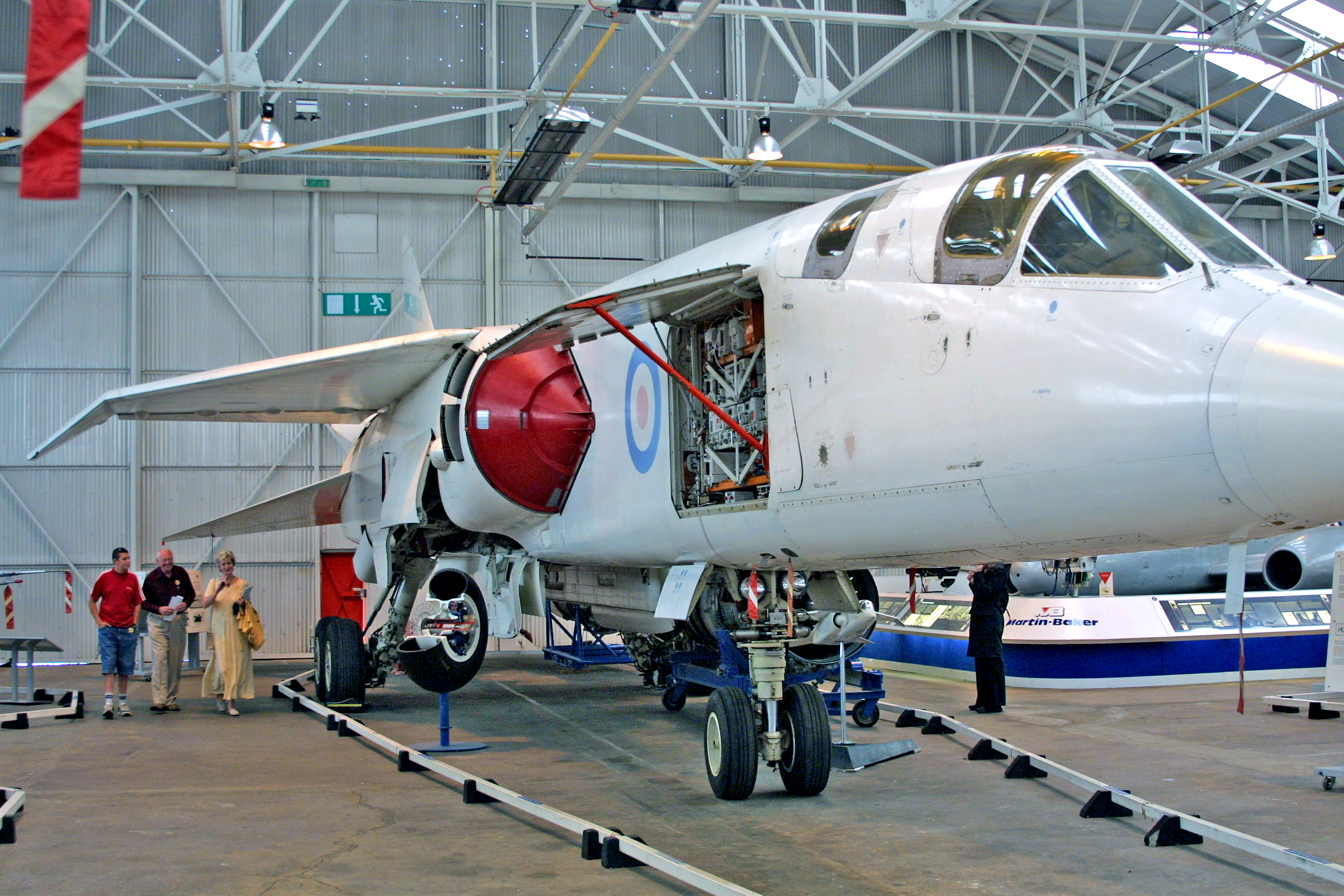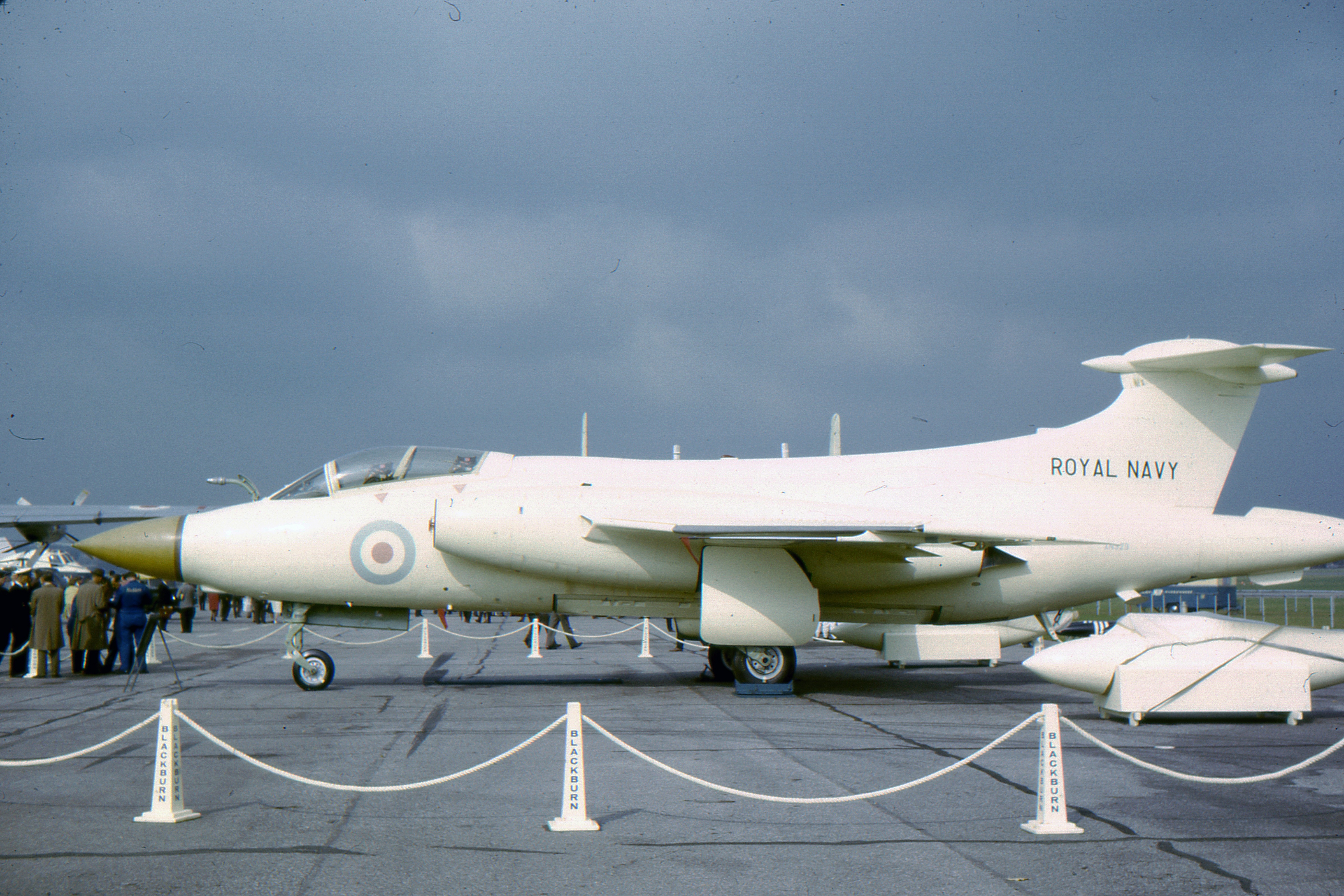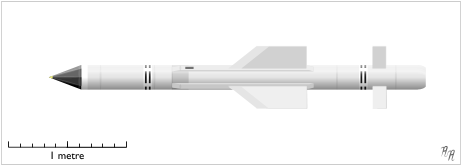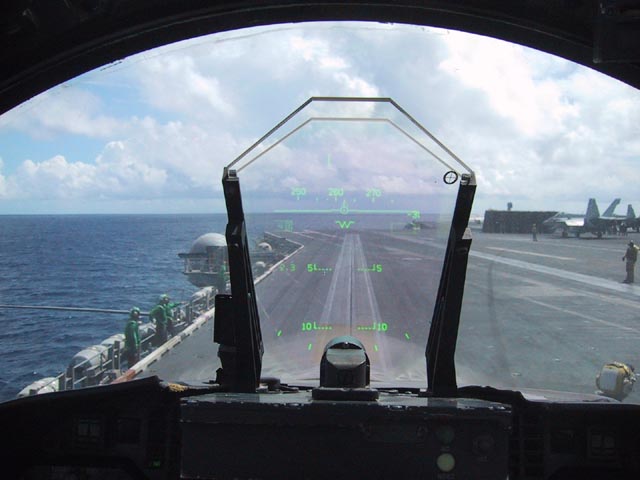|
AIRPASS
AIRPASS was a British airborne interception radar and fire-control radar system developed by Ferranti. It was the world's first airborne monopulse radar system and fed data to the world's first head-up display. The name is an acronym for "Airborne Interception Radar and Pilot's Attack Sight System". In the Royal Air Force (RAF) it was given the official name Radar, Airborne Interception, Mark 23, normally shortened to AI.23. AIRPASS was used on the English Electric Lightning throughout its lifetime. The basic AIRPASS electronics system was later adapted as the basis for a terrain following radar for navigation and targeting for air-to-ground attacks. This AIRPASS II was originally intended for the BAC TSR.2, but when that aircraft was cancelled in 1965, it was subsequently used in the Blackburn Buccaneer. Elements of the AIRPASS design were used on many subsequent radars from Ferranti, while its head-up display was licensed for use in the United States where it was quickly ... [...More Info...] [...Related Items...] OR: [Wikipedia] [Google] [Baidu] |
Terrain Following Radar
Terrain-following radar (TFR) is a military aerospace technology that allows a very-low-flying aircraft to automatically maintain a relatively constant altitude above ground level and therefore make detection by enemy radar more difficult. It is sometimes referred to as ''ground hugging'' or ''terrain hugging'' flight. The term ''nap-of-the-earth'' flight may also apply but is more commonly used in relation to low-flying military helicopters, which typically do not use terrain-following radar. TFR systems work by scanning a radar beam vertically in front of the aircraft and comparing the range and angle of the radar reflections to a pre-computed ideal manoeuvring curve. By comparing the distance between the terrain and the ideal curve, the system calculates a manoeuvre that will make the aircraft clear the terrain by a pre-selected distance, often on the order of . Using TFR allows an aircraft to automatically follow terrain at very low levels and high speeds. Terrain-following r ... [...More Info...] [...Related Items...] OR: [Wikipedia] [Google] [Baidu] |
English Electric Lightning
The English Electric Lightning is a British fighter aircraft that served as an interceptor during the 1960s, the 1970s and into the late 1980s. It was capable of a top speed of above Mach 2. The Lightning was designed, developed, and manufactured by English Electric, which was later merged into the newly-formed British Aircraft Corporation. Later the type was marketed as the BAC Lightning. It was operated by the Royal Air Force (RAF), the Kuwait Air Force (KAF), and the Royal Saudi Air Force (RSAF). A unique feature of the Lightning's design is the vertical, staggered configuration of its two Rolls-Royce Avon turbojet engines within the fuselage. The Lightning was designed and developed as an interceptor to defend the V bomber airfields from attack by anticipated future nuclear-armed supersonic Soviet bombers such as what emerged as the Tupolev Tu-22, but it was subsequently also required to intercept other bomber aircraft such as the Tupolev Tu-16 and the Tupolev Tu-9 ... [...More Info...] [...Related Items...] OR: [Wikipedia] [Google] [Baidu] |
List Of Rainbow Codes
The Rainbow Codes were a series of code names used to disguise the nature of various British military research projects. They were mainly used by the Ministry of Supply from the end of the Second World War until 1958, when the ministry was broken up and its functions distributed among the forces. The codes were replaced by an alphanumeric code system. History During WWII, British intelligence was able to glean details of new German technologies simply by considering their code names. For instance, when they heard of a new system known as ''Wotan'', Reginald Victor Jones asked around and found that Wotan was a one-eyed god. Based on this, he guessed it was a radio navigation system using a single radio beam. This proved correct, and the Royal Air Force was able to quickly render it useless through jamming. Wishing to avoid making this sort of mistake, Ministry of Supply (MoS) initiated a system that would be entirely random and deliberately unrelated to the program in any way, w ... [...More Info...] [...Related Items...] OR: [Wikipedia] [Google] [Baidu] |
Monopulse Radar
Monopulse radar is a radar system that uses additional encoding of the radio signal to provide accurate directional information. The name refers to its ability to extract range and direction from a single signal pulse. Monopulse radar avoids problems seen in conical scanning radar systems, which can be confused by rapid changes in signal strength. The system also makes electronic warfare, jamming more difficult. Most radars designed since the 1960s are monopulse systems. The monopulse method is also used in passive systems, such as electronic support measures and radio astronomy. Monopulse radar systems can be constructed with reflector (antenna) , reflector antennas, lens antenna , lens antennas or array antennas. Historically, monopulse systems have been classified as either phase-comparison monopulse or amplitude monopulse. Modern systems determine the direction from the monopulse ratio, which contain both amplitude and phase information. The monopulse method does not requir ... [...More Info...] [...Related Items...] OR: [Wikipedia] [Google] [Baidu] |
Blackburn Buccaneer
The Blackburn Buccaneer is a British carrier-capable attack aircraft designed in the 1950s for the Royal Navy (RN). Designed and initially produced by Blackburn Aircraft at Brough, it was later officially known as the Hawker Siddeley Buccaneer when Blackburn became a part of the Hawker Siddeley Group, but this name is rarely used. The Buccaneer was originally designed in response to the Soviet Union's ''Sverdlov''-class cruiser construction programme. Instead of building a new fleet of its own, the Royal Navy could use the Buccaneer to attack these ships by approaching at low altitudes below the ship's radar horizon. The Buccaneer could attack using a nuclear bomb, or conventional weapons. It was later intended to carry short-range anti-shipping missiles to improve its survivability against more modern ship-based anti-aircraft weapons. The Buccaneer entered Royal Navy service in 1962. The initial production aircraft suffered a series of accidents due to insufficient engine ... [...More Info...] [...Related Items...] OR: [Wikipedia] [Google] [Baidu] |
De Havilland Firestreak
The de Havilland Firestreak is a British first-generation, passive infrared homing (heat seeking) air-to-air missile. It was developed by de Havilland Propellers (later Hawker Siddeley) in the early 1950s, entering service in 1957. It was the first such weapon to enter active service with the Royal Air Force (RAF) and Fleet Air Arm, equipping the English Electric Lightning, de Havilland Sea Vixen and Gloster Javelin. It was a rear-aspect, fire and forget pursuit weapon, with a field of attack of 20 degrees either side of the target.Gibson 2007, p. 33 Developed under the rainbow code "Blue Jay", Firestreak was the third heat-seeking missile to enter service, after the US AIM-4 Falcon and AIM-9 Sidewinder, both of which entered service the previous year. In comparison to those designs, the Firestreak was larger and almost twice as heavy, carrying a much larger warhead. It had otherwise similar performance in terms of speed and range. It was also a very complex system, with an unusu ... [...More Info...] [...Related Items...] OR: [Wikipedia] [Google] [Baidu] |
Head-up Display
A head-up display, or heads-up display, also known as a HUD (), is any transparent display that presents data without requiring users to look away from their usual viewpoints. The origin of the name stems from a pilot being able to view information with the head positioned "up" and looking forward, instead of angled down looking at lower instruments. A HUD also has the advantage that the pilot's eyes do not need to refocus to view the outside after looking at the optically nearer instruments. Although they were initially developed for military aviation, HUDs are now used in commercial aircraft, automobiles, and other (mostly professional) applications. Head-up displays were a precursor technology to augmented reality (AR), incorporating a subset of the features needed for the full AR experience, but lacking the necessary registration and tracking between the virtual content and the user's real-world environment. Overview A typical HUD contains three primary components: a ... [...More Info...] [...Related Items...] OR: [Wikipedia] [Google] [Baidu] |
English Electric Canberra
The English Electric Canberra is a British first-generation, jet-powered medium bomber. It was developed by English Electric during the mid- to late 1940s in response to a 1944 Air Ministry requirement for a successor to the wartime de Havilland Mosquito fast bomber. Among the performance requirements for the type was an outstanding high-altitude bombing capability and high speed. These were partly accomplished by making use of newly developed jet-propulsion technology. When the Canberra was introduced to service with the Royal Air Force (RAF), the type's first operator, in May 1951, it became the service's first jet-powered bomber. In February 1951, a Canberra set another world record when it became the first jet aircraft to make a nonstop transatlantic flight. Throughout most of the 1950s, the Canberra could fly at a higher altitude than any other aircraft in the world, and in 1957, a Canberra established a world altitude record of . Due to its ability to evade the early ... [...More Info...] [...Related Items...] OR: [Wikipedia] [Google] [Baidu] |
HOTAS
HOTAS, an acronym of hands on throttle-and-stick, is the concept of placing buttons and switches on the throttle lever and flight control stick in an aircraft's cockpit. By adopting such an arrangement, pilots are capable of performing all vital functions as well as flying the aircraft without having to remove their hands from the controls. HOTAS was originally applied to military aircraft, starting with the British interceptor aircraft, the English Electric Lightning, in the late 1950s. The concept quickly spread to numerous other aircraft, such as the General Dynamics F-16 Fighting Falcon, Mikoyan MiG-29, and Eurofighter Typhoon. In more modern implementations, it is often combined with several other input systems, such as direct voice input and helmet-mounted display, to further reduce workload upon pilots as well as the need to divide their attention between the primary controls and other systems. Outside of the cockpit, the Ground Control Stations (GCS) used by drone operat ... [...More Info...] [...Related Items...] OR: [Wikipedia] [Google] [Baidu] |
Thrust Lever
Thrust levers or throttle levers are found in the cockpit of aircraft, and are used by the pilot, copilot, or autopilot to control the thrust output of the aircraft's engines, by controlling the fuel flow to those engines. In multi-engine aircraft, each thrust lever displays the engine number of the engine it controls. Normally, there is one thrust lever for each engine. The thrust levers are normally found in the aircraft's center console, or on the dashboard of smaller aircraft. For aircraft equipped with thrust reversal, the control for each thrust reverser is usually found adjacent to the corresponding engine's thrust lever. The position of each lever can be described by the current angle indicated. This is referred to as the ''Throttle Lever Angle'' or ''TLA''. The greater the TLA, the greater the engine thrust. The throttle lever assembly is often designed to incorporate high-pressure (HP) cock switches so that the pilot has instinctive control of the fuel supply to t ... [...More Info...] [...Related Items...] OR: [Wikipedia] [Google] [Baidu] |
Magnetron
The cavity magnetron is a high-power vacuum tube used in early radar systems and currently in microwave ovens and linear particle accelerators. It generates microwaves using the interaction of a stream of electrons with a magnetic field while moving past a series of cavity resonators, which are small, open cavities in a metal block. Electrons pass by the cavities and cause microwaves to oscillate within, similar to the functioning of a whistle producing a tone when excited by an air stream blown past its opening. The resonant frequency of the arrangement is determined by the cavities' physical dimensions. Unlike other vacuum tubes, such as a klystron or a traveling-wave tube (TWT), the magnetron cannot function as an amplifier for increasing the intensity of an applied microwave signal; the magnetron serves solely as an oscillator, generating a microwave signal from direct current electricity supplied to the vacuum tube. The use of magnetic fields as a means to control the flo ... [...More Info...] [...Related Items...] OR: [Wikipedia] [Google] [Baidu] |
English Electric Lightning F6, UK - Air Force AN1103896
English usually refers to: * English language * English people English may also refer to: Peoples, culture, and language * ''English'', an adjective for something of, from, or related to England ** English national identity, an identity and common culture ** English language in England, a variant of the English language spoken in England * English languages (other) * English studies, the study of English language and literature * ''English'', an Amish term for non-Amish, regardless of ethnicity Individuals * English (surname), a list of notable people with the surname ''English'' * People with the given name ** English McConnell (1882–1928), Irish footballer ** English Fisher (1928–2011), American boxing coach ** English Gardner (b. 1992), American track and field sprinter Places United States * English, Indiana, a town * English, Kentucky, an unincorporated community * English, Brazoria County, Texas, an unincorporated community * En ... [...More Info...] [...Related Items...] OR: [Wikipedia] [Google] [Baidu] |









